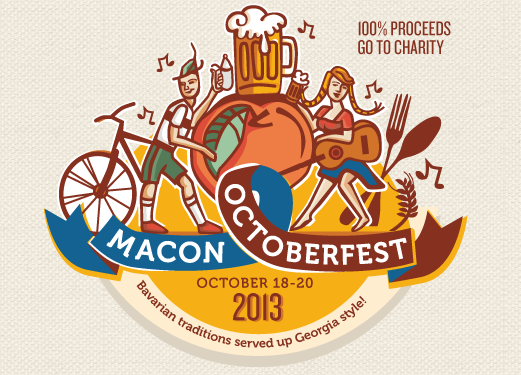How Much Pain Are You In? (But Seriously, Really…)
Every now and then I am approached to blog about something that I would not ordinarily write about, either because I just wouldn’t think about it or I am not aware of it or I wouldn’t think my audience would really care. Many times my eyes are opened by other people in the community who runs across my blog, and for that I am thankful.
Which brings me to today’s post- how much pain are you in? Like really, physically how much pain do you find yourself in? When I wad a sophomore in college, I found myself in excruciating back pain- I was at the Doc in a Box every weekend. Nothing worked. I was even given prescription strength Naproxin. Nothing. NOTHING.
Eventually I found out I was having severe muscle spasms and went to physical therapy. But I had to wonder, how many other people are taking over the counter meds, thinking their temporary relief is enough. Allison Estes of the Axis Pain Center emailed me recently asking if I let my readers (y’all) know about a pain seminar they are hosting. Two actually are being hosting, one in Macon on September 19th and the other in Warner Robins on September 26th. (See flyer attachments below.)
For me, I feel this is relevant to yall because of this article Allison posted on Facebook about more women dying from overdosing on pain killers (to read the article scroll all the way down- I pasted it there). The article provides links to other reports from sources such as USA Today. Now, I haven’t had the time to go through and vet each source and verify them myself, but I think a reasonable person could think that there is a chance people are taking too many over the counter medicines. In today’s society of hurry up and get me well or just let me take a few Tylenol so I can move on to the next project I can see where it might happen.
Interested in attending?
See below for more information…
Love to all yall,
Molly
Article referenced:
Report Indicates Sharp Increase In Women’s Deaths From Painkiller Overdoses.
A report from the Centers for Disease Control and Prevention on an increase in painkiller overdose deaths among women received extensive coverage in print, online, and on all three of last night’s national news broadcasts, where it garnered more than five minutes of total coverage. Many of the articles use phrases like “sky rocketing” to describe the increase. Nearly all of the articles quote CDC Director Dr. Thomas Frieden, who spoke of the magnitude of the problem.
ABC World News (7/2, story 8, 2:25, Sawyer) reported, “A new alert tonight from the CDC says the number of women dying from overdoses in America is sky rocketing.”
The CBS Evening News (7/2, story 6, 0:20, O’Donnell) reported that the agency “says painkillers killed 48,000 women between 1999 and 2010.”
On NBC Nightly News (7/2, story 7, 2:20, Williams), Dr. Frieden was shown saying, “Prescription opiates now kill more people than heroin and cocaine combined. They send more people to emergency departments than heroin and cocaine combined.”
USA Today ![]()
![]() (7/2, Waseem) reports that the research indicates “that while men are still more likely to die of overdoses, the number of deaths among women increased five-fold in the last decade, four times more than deaths in women from cocaine and heroin combined, says…Frieden.” Approximately 12% of the fatalities were suicides, according to CDC experts. “Women may be more prone to overdoses because they’re more likely to have chronic pain, be prescribed painkillers, have higher doses, and use them longer than men, said Linda Degutis, director of CDC’s National Center for Injury Prevention and Control.” Fatalities from overdoses of “prescription painkillers skyrocketed over the past decade despite no major increases in the need for prescription painkillers over the last 20 years, said Chris Jones, a health scientist at CDC.”
(7/2, Waseem) reports that the research indicates “that while men are still more likely to die of overdoses, the number of deaths among women increased five-fold in the last decade, four times more than deaths in women from cocaine and heroin combined, says…Frieden.” Approximately 12% of the fatalities were suicides, according to CDC experts. “Women may be more prone to overdoses because they’re more likely to have chronic pain, be prescribed painkillers, have higher doses, and use them longer than men, said Linda Degutis, director of CDC’s National Center for Injury Prevention and Control.” Fatalities from overdoses of “prescription painkillers skyrocketed over the past decade despite no major increases in the need for prescription painkillers over the last 20 years, said Chris Jones, a health scientist at CDC.”
In a 1,000-word, front-page story, the New York Times ![]()
![]() (7/3, A1, Tavernise, Subscription Publication) reports that although “women in their 20s and 30s tend to have the highest rates of opioid abuse, the overdose death rate was highest among women ages 45 to 54, a finding that surprised clinicians.” That “range indicates that at least some portion of the drugs may have been prescribed appropriately for pain, Dr. Nora Volkow, director of the National Institute on Drug Abuse, said in an interview.”
(7/3, A1, Tavernise, Subscription Publication) reports that although “women in their 20s and 30s tend to have the highest rates of opioid abuse, the overdose death rate was highest among women ages 45 to 54, a finding that surprised clinicians.” That “range indicates that at least some portion of the drugs may have been prescribed appropriately for pain, Dr. Nora Volkow, director of the National Institute on Drug Abuse, said in an interview.”
The Wall Street Journal ![]()
![]() (7/3, A2, Martin, Subscription Publication) reports that during a teleconference, Frieden said, “Many people have become addicted, because of the large number of prescriptions being written.” Frieden said that problems related to painkillers among women are “underrecognized” by physicians.
(7/3, A2, Martin, Subscription Publication) reports that during a teleconference, Frieden said, “Many people have become addicted, because of the large number of prescriptions being written.” Frieden said that problems related to painkillers among women are “underrecognized” by physicians.
According to the AP ![]()
![]() (7/3, Stobbe), the new “report focuses on prescription opioids like Vicodin and OxyContin and their generic forms, methadone, and a powerful newer drug called Opana, or oxymorphone.” Frieden said, “These are dangerous medications and they should be reserved for situations like severe cancer pain.”
(7/3, Stobbe), the new “report focuses on prescription opioids like Vicodin and OxyContin and their generic forms, methadone, and a powerful newer drug called Opana, or oxymorphone.” Frieden said, “These are dangerous medications and they should be reserved for situations like severe cancer pain.”
Bloomberg News ![]()
![]() (7/3, Adams) reports that Frieden said, “When I look at all of the problems we deal with at CDC, there are few that are getting worse,” but this one “is getting worse, and it’s getting worse quickly.”
(7/3, Adams) reports that Frieden said, “When I look at all of the problems we deal with at CDC, there are few that are getting worse,” but this one “is getting worse, and it’s getting worse quickly.”
The Los Angeles Times ![]()
![]() (7/3, Girion, Glover) reports that Frieden’s “comments come as the U.S. Food and Drug Administration considers new controls on the way narcotic painkillers can be prescribed and promoted.” Being that “the issue is pending before the FDA, a spokesman said the agency could not comment.”
(7/3, Girion, Glover) reports that Frieden’s “comments come as the U.S. Food and Drug Administration considers new controls on the way narcotic painkillers can be prescribed and promoted.” Being that “the issue is pending before the FDA, a spokesman said the agency could not comment.”
The New York Daily News ![]()
![]() (7/3, Miller) reports, “The CDC advised health care providers to follow prescription guidelines, take caution when combining drugs, and monitor their patients for potential substance abuse behaviors.”
(7/3, Miller) reports, “The CDC advised health care providers to follow prescription guidelines, take caution when combining drugs, and monitor their patients for potential substance abuse behaviors.”
Drugmakers Devising Painkillers That Avoid Misuse. Bloomberg News ![]()
![]() (7/3, Adams) reports, in a 1,200-word article, “Backed by a U.S. campaign to slow abuse of prescription painkillers, drugmakers are devising new forms of the medicines that don’t lead to misuse and new products that treat dependency in a bid to change the face of a $9.4 billion market.” In a telephone interview, Douglas Throckmorton, deputy director for regulatory programs at the FDA, said, “What we want is abuse-deterrent formulations that work. We know how important this is.”
(7/3, Adams) reports, in a 1,200-word article, “Backed by a U.S. campaign to slow abuse of prescription painkillers, drugmakers are devising new forms of the medicines that don’t lead to misuse and new products that treat dependency in a bid to change the face of a $9.4 billion market.” In a telephone interview, Douglas Throckmorton, deputy director for regulatory programs at the FDA, said, “What we want is abuse-deterrent formulations that work. We know how important this is.”








